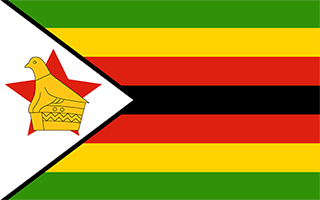Facts and Data
Webpages:
Official Unesco Page
View photos from OUR PLACE the World Heritage collection
Basis Data:
Unesco World heritage since: 1986
Size of heritage:
Coordinates:
Longitude: 28,377°
Latitude: -19,842°
Summary
Khami, which developed after the capital of Great Zimbabwe had been abandoned in the mid-16th century, is of great archaeological interest. The discovery of objects from Europe and China shows that Khami was a major centre for trade over a long period of time.
Location on Map
Show bigger map on Openstreetmap
Introduction
The Khami Ruins National Monument is a UNESCO World Heritage site located in the Western Region of Zimbabwe, specifically in Matabeleland. This archaeological site holds great historical and cultural significance, as it was once the capital of the Kingdom of Butua during the 15th and 17th centuries. Today, the Khami Ruins stand as a testament to the rich history and architectural achievements of the region.
History
The Khami Ruins were built by the Torwa dynasty, who ruled the Kingdom of Butua. The kingdom was established in the 15th century and reached its peak during the 16th century. The Torwa dynasty constructed the Khami Ruins as their capital, which served as a political, economic, and religious center.
The ruins are characterized by their unique dry-stone walling technique, which was a significant architectural achievement of the time. The walls were constructed without the use of mortar, with stones carefully fitted together to create intricate patterns and designs. This technique not only provided structural stability but also showcased the advanced engineering skills of the Torwa dynasty.
Current State
Today, the Khami Ruins National Monument is a well-preserved archaeological site that attracts visitors from around the world. The site covers an area of approximately 1,300 hectares and consists of various structures, including the royal enclosure, residential areas, and a vast network of terraces and platforms.
The ruins are surrounded by a picturesque landscape, with the Khami River flowing nearby, adding to the site's natural beauty. Visitors can explore the ruins and witness the impressive dry-stone walls that have withstood the test of time.
Efforts have been made to preserve and protect the Khami Ruins National Monument. The site is managed by the National Museums and Monuments of Zimbabwe, which ensures its conservation and provides educational resources for visitors. Interpretive signage and guided tours are available to enhance the visitor experience and provide insights into the historical and cultural significance of the site.
Significance
The Khami Ruins National Monument holds immense cultural and historical value. It provides a glimpse into the ancient Kingdom of Butua and the architectural achievements of the Torwa dynasty. The site's dry-stone walling technique is considered a masterpiece of African architecture and has influenced subsequent architectural styles in the region.
Furthermore, the Khami Ruins serve as a reminder of the complex social and political structures that existed in pre-colonial Zimbabwe. The site offers valuable insights into the organization of the Kingdom of Butua and its interactions with neighboring kingdoms.
Conclusion
The Khami Ruins National Monument in Zimbabwe is a UNESCO World Heritage site that showcases the architectural prowess and historical significance of the Kingdom of Butua. With its well-preserved ruins and unique dry-stone walling technique, the site offers visitors a chance to delve into the rich history and culture of the region. The Khami Ruins stand as a testament to the ingenuity and achievements of the Torwa dynasty, and their preservation ensures that future generations can appreciate and learn from this remarkable heritage site.
